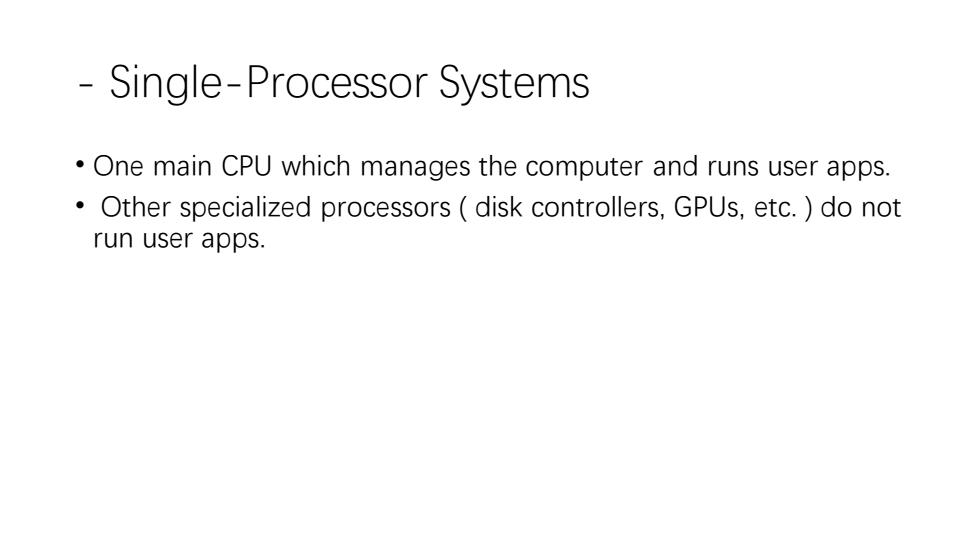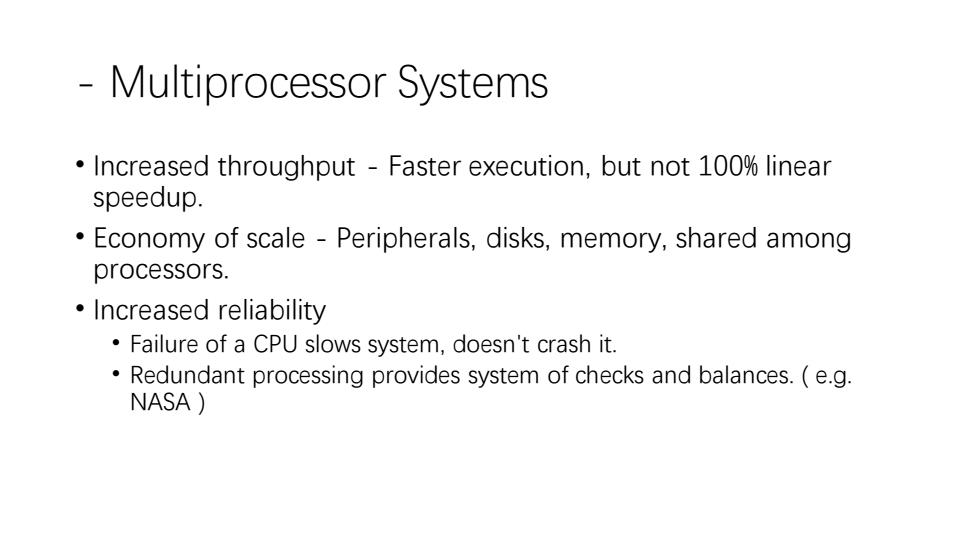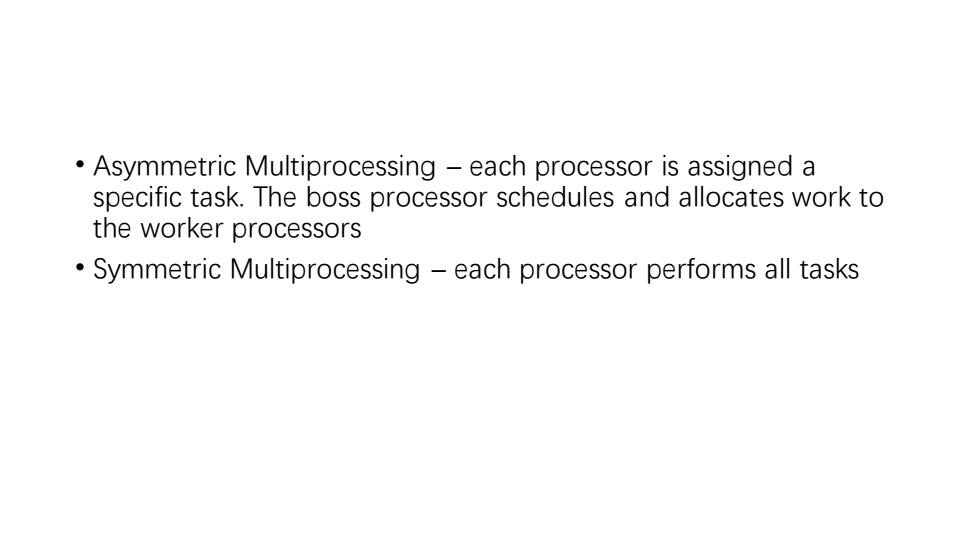
Computer-System Architecture Different Operating Systems for Different Kinds of Computer Environments Single-Processor Systems Multiprocessor System ·Clustered System
Computer-System Architecture • Different Operating Systems for Different Kinds of Computer Environments • Single-Processor Systems • Multiprocessor System • Clustered System

Single-Processor Systems One main CPU which manages the computer and runs user apps. Other specialized processors disk controllers,GPUs,etc.do not run user apps
- Single-Processor Systems • One main CPU which manages the computer and runs user apps. • Other specialized processors ( disk controllers, GPUs, etc. ) do not run user apps

Multiprocessor Systems Increased throughput-Faster execution,but not 100%linear speedup. Economy of scale -Peripherals,disks,memory,shared among processors. Increased reliability Failure of a CPU slows system,doesn't crash it. Redundant processing provides system of checks and balances.(e.g. NASA
- Multiprocessor Systems • Increased throughput - Faster execution, but not 100% linear speedup. • Economy of scale - Peripherals, disks, memory, shared among processors. • Increased reliability • Failure of a CPU slows system, doesn't crash it. • Redundant processing provides system of checks and balances. ( e.g. NASA )

CPU coreo CPU core CPUo CPU; CPU registers registers registers registers registers cache cache cache cache cache memory memory

Asymmetric Multiprocessing-each processor is assigned a specific task.The boss processor schedules and allocates work to the worker processors Symmetric Multiprocessing -each processor performs all tasks
• Asymmetric Multiprocessing – each processor is assigned a specific task. The boss processor schedules and allocates work to the worker processors • Symmetric Multiprocessing – each processor performs all tasks